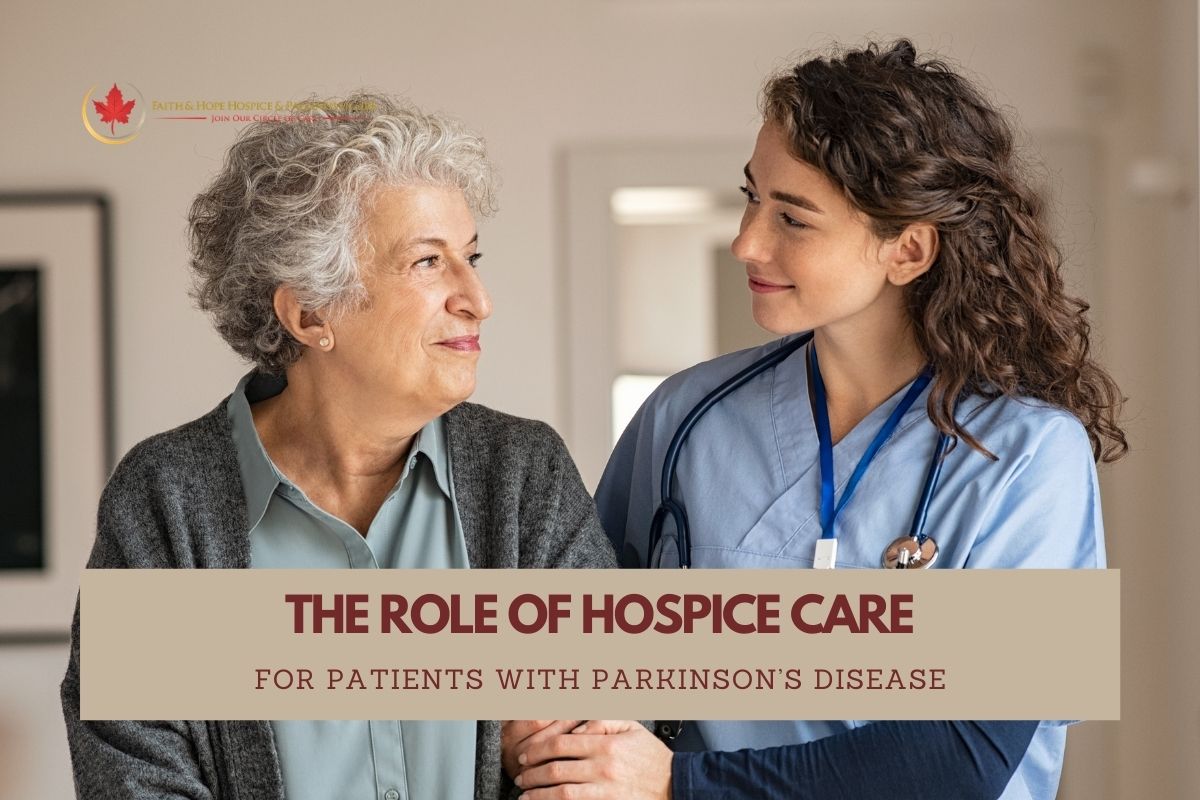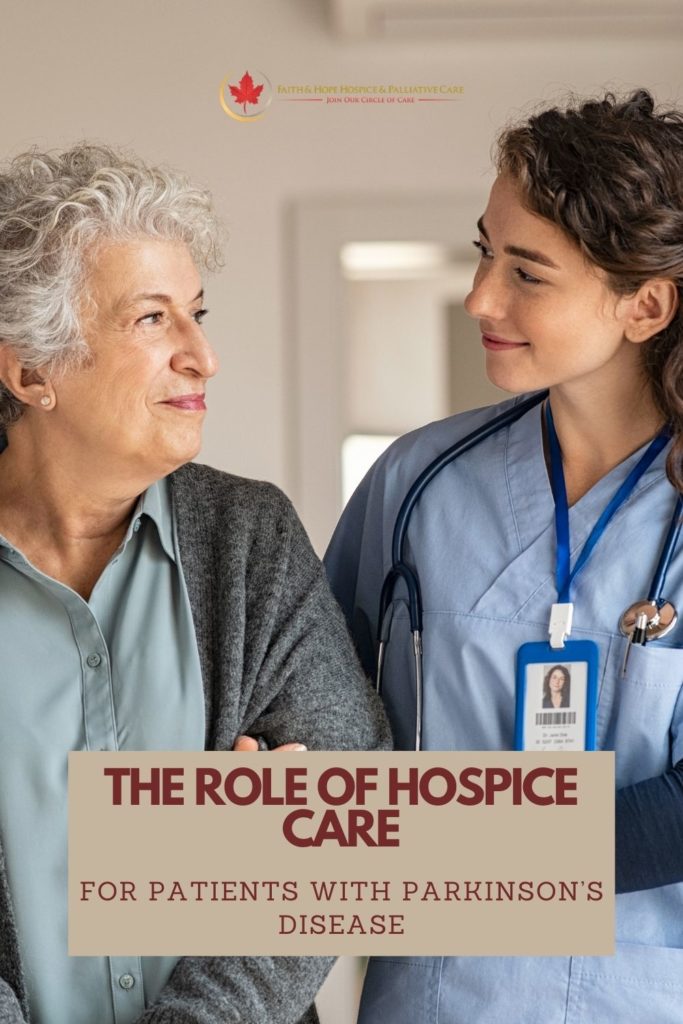
- By: administrator
- Blog
- No Comments
Parkinson’s disease is a brain disorder that affects the central nervous system which can lead to symptoms like stiffness, shaking, difficulty walking, loss of balance, and decreased coordination. As the disease progresses into more advanced stages, people can lose all ability to walk and speak. Many patients with Parkinson’s disease require constant attention. Hospice care in Burbank CA like Faith and Hope can provide immeasurable relief to a patient with Parkinson’s disease as well as their loved ones.

Hospice staff is trained to help patients through pain and other difficult symptoms in their time of vulnerability. The goal of every hospice in Burbank California is to increase a patient’s quality of life by providing health care outside of a hospital setting wherever a patient calls home. This generates a sense of peace, fulfillment, and the opportunity to continue making and sharing memories with loved ones. Hospice care is both physical and emotional. The provider can monitor a patient’s medications, help them manage pain, and assist with other activities such as bathing. However, hospice care can also include emotionally fulfilling programs such as music therapy and counseling. Many hospice providers take a holistic approach to treating and supporting patients. Plus, their services extend to grieving family members as well.
Hospice care in Burbank CA can be offered in a multitude of places: nursing homes assisted living facilities and homes. For optimal comfort, home hospice services allow patients with Parkinson’s disease to be cared for in a familiar environment. This is especially important for patients that are living out their last days. Family members and close friends also prefer the intimacy of the home environment, where the patient can feel more like themselves. A hospice team may include physicians, nurses, social workers, home health aides, therapists, and pastoral services. Some hospices also have volunteers that may visit a patient with Parkinson’s to read stories or play music. Depending on the needs of the patient, a hospice provider can provide medical supplies, equipment, counseling, and medications.
Parkinson’s is an insidious disease with no clear timeline. For this reason, it can be difficult to know when it is the right time to employ hospice care. Patients may function for years under the close supervision of healthcare providers and family members. However, this disease can also take a turn for the worst at any time. Hospice services offer significant relief for patients and their loved ones by dealing with the day-to-day issues of infections, pain, urinary incontinence, weight loss, pneumonia, dementia, and other additional conditions that the patient may be dealing with in tandem. Medicare programs ask that healthcare providers only enroll individuals in hospice when their life expectancy reaches six months or less. However, the care of these facilities can increase a patient’s life for much longer than the six-month period. Medicare reimbursed programs will regularly evaluate the individual’s health and determine whether they should be re-enrolled or discharged from hospice.
Questions to Answer When Considering Hospice:
- How much does the individual with Parkinson’s know about end-of-life care and how do they feel about it?
- Does the individual with Parkinson’s understand their prognosis and health care needs?
- Does the individual with Parkinson’s want to remain in their current home setting for their end-of-life care?
- Has the health care provider of the individual with Parkinson’s been consulted about hospice care?
- Is there a power of attorney and/or living will in place for the individual with Parkinson’s?
- If the individual with Parkinson’s is unable to communicate their wishes for hospice care, is there a trusted individual to represent their wishes?
- Is the individual with Parkinson’s eligible for Medicare/Medicaid hospice care?
Naturally, the discussion of hospice can be a difficult one, especially if the patient has a negative association with end-of-life care. Some patients may see this program as “accepting defeat,” and may be less convinced that it is the right choice. It is important that everyone is on the same page with regard to the patient’s physical and mental state as well as the benefits of hospice care. Family members/caregivers, health care providers, hospice agencies, and the patient with Parkinson’s should be involved in the conversation so that the best solution can be reached. Healthcare workers and hospice staff can work with the family to provide information and support as this process is worked through.
Medicare, Medicaid, and private health insurance typically provide hospice coverage. Families and caregivers should have a hand in selecting the right hospice agency by researching local programs and asking for recommendations among support groups. Online directories like The National Association for Home Care and Hospice can also help loved ones compare the available hospice providers. Once a referral is sent, a hospice representative will visit the Parkinson’s patient in order to complete an initial assessment. This evaluation will determine the level of care required, including specific services, frequency of attention, and medical equipment.
Hospice care can be an invaluable service to patients with Parkinson’s disease as well as their loved ones. Once they are under a program of care, family members can focus on creating positive experiences and memories with the individual while they live out their last days. The individual with Parkinson’s can enjoy the benefits of pain management, emotional counseling, and medical care in the comfort of their own home.
Our staff at Faith & Hope Hospice & Palliative Care are prepared to offer meaningful care for patients with diseases like Parkinson’s. If you or a loved one is in need of end-of-life care, please contact Faith & Hope at (855) 982-3848. You can also visit our website to learn more about our range of services and collect some useful resources about hospice care: https://faithandhopehospice.com/.
